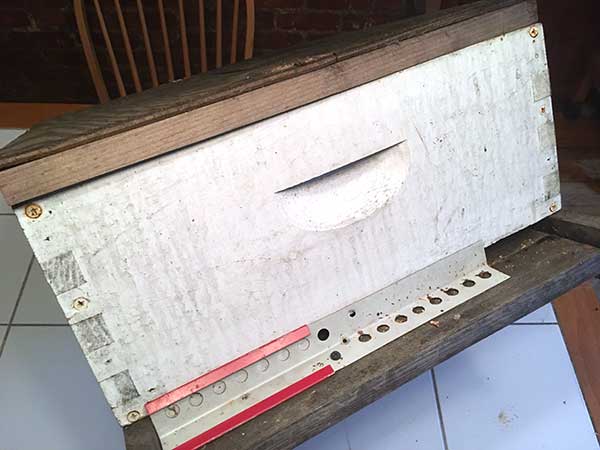Helping your bees survive winter is one of the hardest parts of beekeeping. I have several videos about winter bee survival and feeding. A reader asked:
It’s been in the 20’s and 30’s for the last two weeks or so with another week of the same temps. If my bees are clustered will they be able to feed and keep clustered enough to survive until the weather breaks?

Will The Bees Survive Winter?
Honeybees don’t hibernate, they cluster. Their metabolism does slow down, but the don’t ‘go to sleep’. The bees move around the hive, in a balled mass, with the queen in the middle. They move through the hive eating the honey stores. The bees on the outside of the cluster move their wings to generate heat, to keep the cluster warm. And the bees rotate, kinda like a volleyball team, so the bees on the outside of the cluster slowly move to the center to warm up, and the inner bees move outward to be the cluster-warmers.
In a perfect world, this works fine, then spring comes, and the queen lays eggs, and off we go on another season. But in the northern states, this is not the case. Whatever issues a hive had over the season has a big impact on whether the bees survive winter.

I’ve got a bunch of vids and how to posts on the topic of winter beekeeping, but I’ll answer the question above right quick.
Temps in the 20 and 30s are pretty good for winter, I think. The problems get really bad when its near zero. But you can still lose your bees in a 30 degree winter.
Mite Load. If there are mites in the hive in the fall, that number will explode in winter. As the mite load rises, the bee population declines due to winter die off. The mites will eventually kill off the rest of the hive. Currently I think the best mite treatment is with oxalic acid, here’s the video.
BTW, just because you don’t see mites doesn’t meant you don’t have any. You more than likely do.

Condensation. The outside of the hive is cold, the inside is warm. Condensation collects on the top of the hive, and drips back down onto the bees. Cold bees are OK in winter, cold wet bees are dead bees in winter. The combined use of dry sugar feeding and a insulated inner cover eliminates condensation.
Starvation. Either leave a lot of honey on the hive or feed your bees starting in late summer. Sugar syrup is cheap winter bee survival insurance.

Emergency Winter Feeding. I think the dry sugar feed is great, but you can also put fondant, sugar cakes, or candy boards on top of your hive. The dry sugar method, aka moutain top feeding, is literally a piece of newspaper on top of the hive with 4 pounds of dry sugar poured on it.
Northern Queen. Southern queen that come in bee packages have a lower survival rate than Northern Queens. If you have bought a package, you can replace the queen in summer (requeening video here), and increase your chances of winter survival.
OK, that is my 500 word thought on the subject, what are your thoughts? I always learn from you all in the comments. Thx!

























































